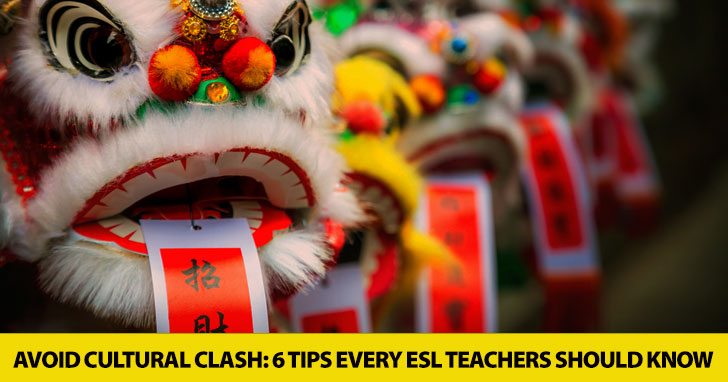Avoid Cultural Clash: 6 Tips Every ESL Teachers Should Know


I knew it before I went overseas to teach, so it wasn’t a surprise to me when I saw it in person. Granted, the site of twenty pairs of shoes outside an apartment door at a party wasn’t something I had seen before, but it made sense. Chinese people, and foreigners in China like me, don’t wear shoes in the house.
I don’t know why it was, then, that I was surprised to see my students taking their shoes off before entering the classroom, my classroom where I had traveled thirty-six hours to stand at the teacher’s desk and, hopefully, make a difference in the lives of kids. I don’t know why I never expected each of my students to leave a pair of slippers at school so they could change when they arrived in the morning and again when they left at the end of the day. I’m not sure why I never thought about the pile of shoes that would sit outside my classroom door every day.
Culture is a tricky thing. People often compare it to an iceberg. Did you know that ninety percent of that giant piece of ice rests below the surface of the water? You can only see ten percent, and that’s not much to go on. Culture is like that. You see some of it, but what you don’t see far outweighs what you do. You can see what I mean with this culture as an iceberg graphic.
I saw that people in China did not wear shoes in the house. I did not see the deeper significance that motivated it. And that is why I was surprised when my students left their shoes at the classroom door. I knew the habit, but I didn’t think about the reason for it.
Here’s another cultural thing that caught me off guard when I was teaching in East Asia. We all know the classic idea of an apple on the teacher’s desk. It’s kind of a way to gain favor with the person at the head of the class, and that’s what I thought of when I found a piece of fruit on my desk. Except I didn’t find an apple. I found an orange. Several days in a row. I just thought my students were being nice, but it was more than that. What I didn’t see was the association between someone who looks sick and oranges. I thought my students were giving me token gifts. They were really telling me I looked sick. I’m embarrassed to say I was a little offended when I learned the truth behind those oranges, and I made sure to get to bed early that night.
But that’s the thing we ESL teachers have to be so careful of. Culture, whether it’s the one we come from or the one we are immersed in, sneaks up on us. It catches us off guard, and we find ourselves reacting rather than responding. Let me unpack that a bit.
A reaction is an instinctual response to something. It comes quickly and without thought. When someone throws something at your face, you react by dodging. You don’t think about it.
But responding is different. A response takes a moment. You have to think about the situation and what you are going to do or say. Sometimes a response goes against our instincts. Our brain is in control rather than our biology.
My reaction was to be offended by the oranges. My response was something different. I appreciated my students’ concern for me. I valued their well wishes, even if it did come in the form of an orange.
I really believe every ESL teacher should learn about culture before they teach overseas, and I don’t just mean the culture they are travelling to. You see, our own culture makes up a huge part of how we think and the values we have. And though it’s easier to get a grasp of one’s own culture, we still fail to see the majority of it. We don’t realize what lies under the surface, even of ourselves.
Before I went overseas to teach, I went to a conference to prepare me for living and working in East Asia. For two weeks, I went to seminars, did activities, and took personality tests to get me ready to head to the other side of the world. The funny thing is, I didn’t learn anything about Asia at all. I learned about myself. I learned where my own cultural biases were, well some of them anyway. Because knowing about myself and my culture made it possible for me to respond rather than react when I hit bumps along the road of cross cultural experiences.
If you are considering going overseas, you are teaching a classroom full of students from another country, or even if you have already boarded the plane, I encourage you to explore your own cultural values and biases. Knowing not only what you believe but why you believe it can make a huge difference in how you interact with people of other cultures.
As part of my training I read the Survival Kit for Overseas Living, and I really valued what the author had to say. But this isn’t the only book that can help you prepare to live overseas. There are plenty of books written about living overseas and how to handle the cultural differences you will encounter.
Still, there is no silver bullet. No guarantee. No magic pill that will prevent you from having culture shock no matter how well you prepare. But the more you try, the better off you will be. The more you understand yourself, the easier it will be to understand people of another culture.
Encourage them to think about their own culture, their own values. The things that are below the water’s surface of their own iceberg. Helping your international students understand each other can be one of the greatest things you can do as an ESL teacher and one of the key factors to making your classroom a comfortable, safe place for your students to learn.